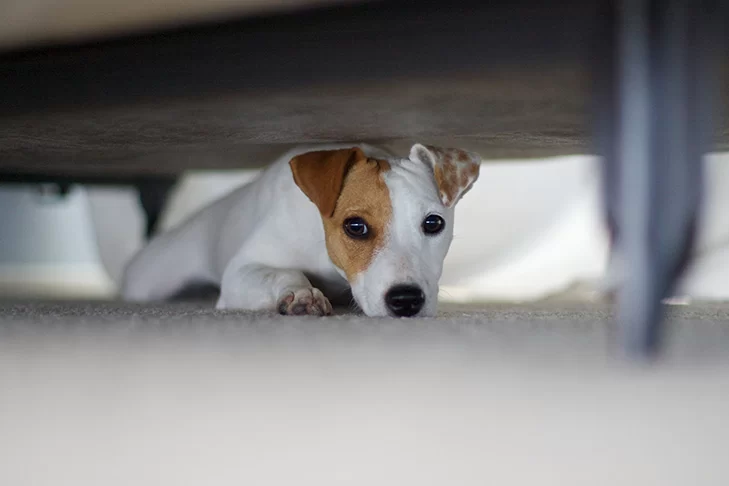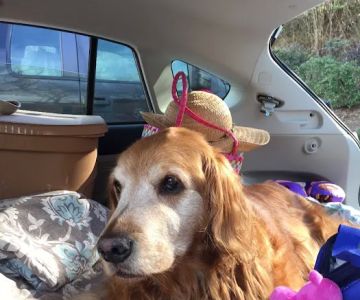How to Teach a Dog to Stop Being Fearful of People
If you've noticed that your dog reacts fearfully to new people, you’re not alone. Many pet owners face this issue, and while it can be heart-wrenching to watch your dog struggle, the good news is that you can help them. As a dog lover myself, I’ve gone through the journey of training my fearful dog, and in this article, I’ll share what worked for me and how you can help your dog feel more comfortable around people.

1946 S Christopher Columbus Blvd, Philadelphia, PA 19148, USA
See DetailsUnderstanding Why Dogs Are Fearful of People
Fear in dogs can stem from various causes, and it’s essential to understand the root of your dog’s fear before you can address it. Fear is often a survival mechanism, and many dogs are naturally more cautious around strangers. However, some dogs develop fear due to traumatic experiences, lack of socialization, or even genetics.
When a dog shows fear towards people, it might exhibit behaviors such as cowering, growling, barking, or trying to hide. These behaviors can be especially challenging for pet owners, particularly if they have a dog that is shy or anxious around strangers.
Step 1: Assess Your Dog’s Fear
The first step in addressing your dog’s fear is to understand how intense the fear is and what triggers it. For example, does your dog fear everyone, or are there certain types of people (e.g., men, children, or people wearing hats) that cause more anxiety? Taking notes on your dog’s behavior can help you identify patterns and tailor your training approach accordingly.
Start by introducing your dog to people in controlled situations. Observe your dog’s body language—whether they’re backing away, growling, or trying to escape. This can give you insight into what makes your dog fearful and how to address it more effectively.
Step 2: Create a Safe Environment
To help your dog overcome fear, you need to ensure they feel safe and secure in their environment. A calm, quiet space where your dog can retreat to if they feel overwhelmed is crucial. This could be their crate, a quiet room, or a corner of the living room where they feel in control. When introducing new people, always make sure your dog has the option to retreat to their safe space if necessary.
Step 3: Gradual Desensitization
Desensitization is a proven method to help fearful dogs become more accustomed to their fear triggers. This involves gradually exposing your dog to people in a calm, controlled manner, starting from a distance where they feel comfortable. Over time, you can slowly decrease the distance between your dog and the person they fear.
For example, you can start by having someone your dog is comfortable with approach them at a safe distance. Praise your dog for staying calm, and gradually increase the level of interaction. This method should always be slow and controlled—pushing your dog too quickly into a situation they find overwhelming will only reinforce their fear.
Step 4: Positive Reinforcement
Positive reinforcement is one of the most powerful tools in dog training. Rewarding your dog for calm behavior when encountering new people can help build positive associations with people. Use treats, praise, and toys to reward your dog when they approach a new person without fear.
For example, if your dog is approaching a new person and remains calm, immediately reward them with a treat. This will teach your dog that good things happen when they stay calm around people. Over time, they’ll begin to associate people with positive experiences rather than fear.
Step 5: Socialization with Other Dogs and People
Socialization is a critical aspect of training a fearful dog. The more experiences your dog has with different people and environments, the more they will learn to navigate new situations confidently. Start socializing your dog with well-behaved dogs and calm individuals to build their confidence.
Socialization doesn’t mean overwhelming your dog with too many new people at once. Take it slow and allow your dog to adjust to each new interaction at their own pace. You can also set up playdates with other dogs, as interacting with other well-behaved dogs can sometimes help a fearful dog gain confidence in people.
Step 6: Seek Professional Help
If your dog’s fear is particularly severe or if the methods above aren’t working, it might be time to consult with a professional dog trainer or animal behaviorist. A trainer with experience in working with fearful dogs can provide personalized advice and may use advanced techniques like counter-conditioning or even therapy dog training to help your dog overcome their fear.
Remember, every dog is different, and it may take time to see significant improvement. Be patient with your dog, and don’t lose hope. With consistency, positive reinforcement, and the right approach, you can help your dog feel more comfortable and secure around people.
Building Trust Takes Time
One of the most important things to remember when working with a fearful dog is that trust takes time. It may take weeks or even months for your dog to fully overcome their fear of people. The journey can be challenging, but it’s incredibly rewarding when you see your dog’s progress. Celebrate the small victories, and continue providing a calm, supportive environment for your dog as they work through their fears.
As you continue your training, be sure to remain consistent and patient. Every positive interaction with new people is a step toward helping your dog become more confident and less fearful. The bond you create through this process will be strong, and you’ll both enjoy the fruits of your labor as your dog learns to trust and feel comfortable around people.











